Working in ink with pens and brushes
I’ve been working more on capturing the movements of bees, as well as studying their anatomy, all the while learning about using the Indian ink in various ways.
The materials I’m using can be seen in the first picture below left, and are: the Gillott 404 nib and dip pen, Winsor & Newton Liquid Indian Ink, a Winsor & Newton Cotman fine brush, distilled water, a lint-free cloth to clean the nib, blotting paper, and a mixing palette for the ink wash. All the drawings shown in this blog post are on Bristol Board: some on Strathmore smooth Bristol board which has a nice off-white tone, while others including this large white foxglove drawing are on the bright white Canson Bristol Board.
An outdoor sketch of white foxglove, with bee visitors:
Above: For this drawing I left the studio and took my pen and ink kit onto the decking where I had a good view of a white foxglove which was being visited by many bumble bees. Above centre and right: two closer views of the drawing. I sketched the foxglove itself, adding a quick impression of each bee visiting the flowers during the hour or so I was there. As you can see the bees tend to repeat the same pattern of flight, visiting each flower in turn usually for a quick inspection and only sometimes entering a flower for pollen and nectar.
A purple foxglove with raindrops and a bee:
Above: For this drawing I worked in the studio from a reference photograph on the computer screen. I have found that this is more successful than working from a printed photograph, as it allows me to zoom into the image when necessary to check a detail. Somehow the light in the computer screen also helps to reveal some quality which seems to be lost when something is printed. For this drawing I sketched the outlines in ink, then using distilled water and a fine brush drew the ink out of the lines to create shading. This is possible with Winsor & Newton Liquid Indian ink as it is not waterproof. For the darker areas I added more and more ink in washes.
So at the moment I’m working on something midway between the “correctness” of this final leafcutter drawing and the animation and freer style of the bee carrying the leaf. I will continue to use the dip-pens as I’m quite pleased with some of the results I’m getting.
You can read an interview with me in Bee Mentor which looks at my interest in leafcutter bees, but also covers my drawing techniques and practice, and my photography.
| Home | About | Contact | Galleries | Subscribe to Blog |
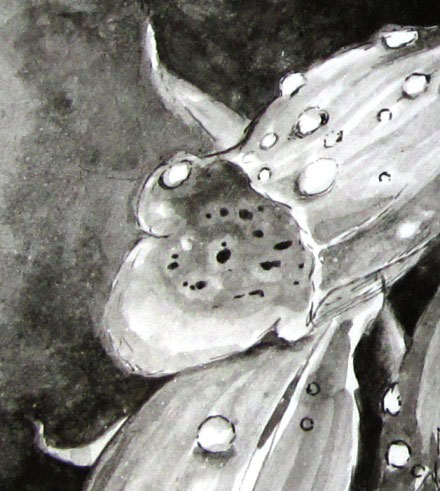
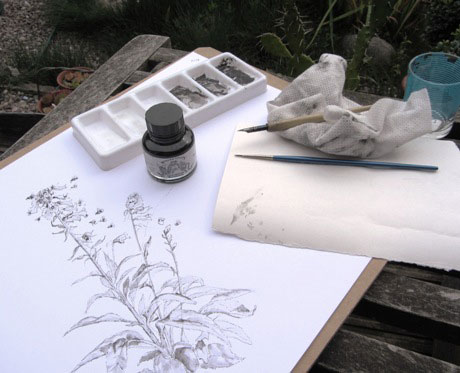
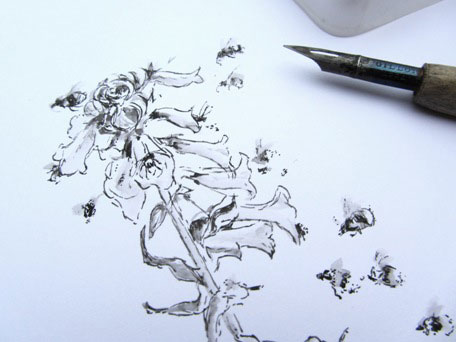
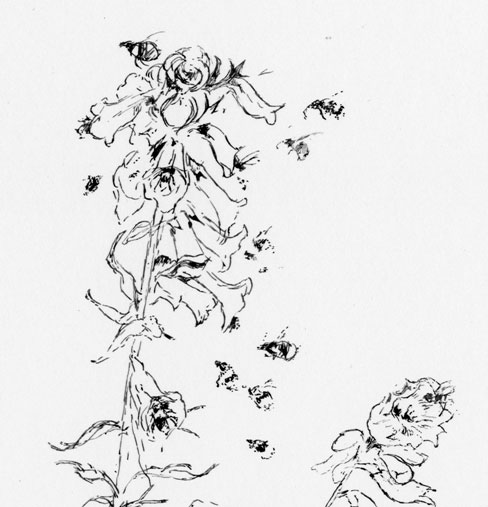
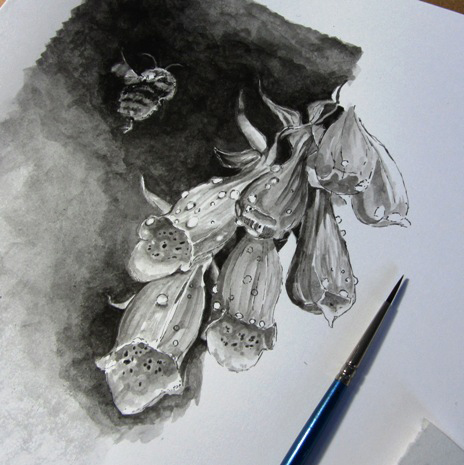
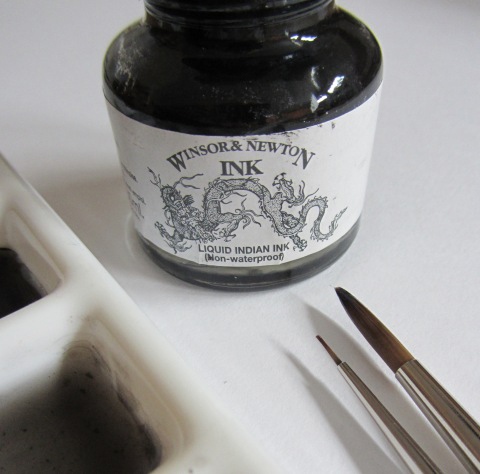
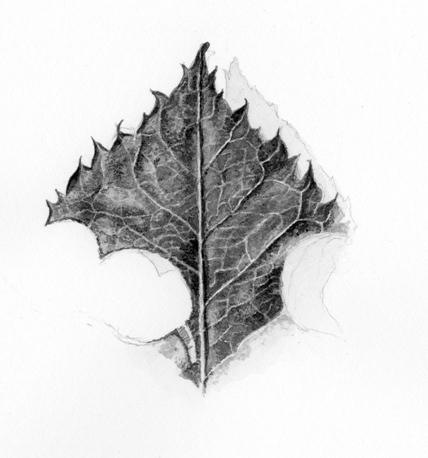
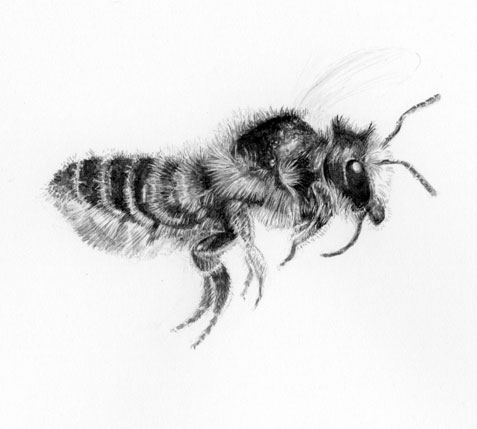
I am thoroughly enjoying your posts about bees and your pen and ink drawings! Thanks!
Thanks, Melissa!
Dear Christine,
I have helped a client totally remodel a home and discovered the leafcutter bee funnels between the cedar siding. I stunned and fascinated by the exquisite jewel-like funnels but had no idea what made them.
I contacted the Oregon Extension Service and discovered it was the leafcutter bee. My plan was always to frame the funnels in a shadow box with an accompanying photo of the bee. So, in searching for a leafcutter picture I found you and your drawings which are fabulous.
Can you let me know what you have for sale? Do you make the prints in different sizes or cards? I look forward to hearing from you.